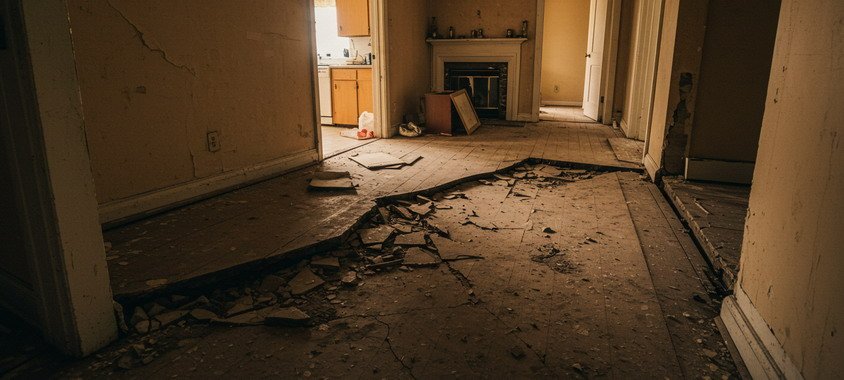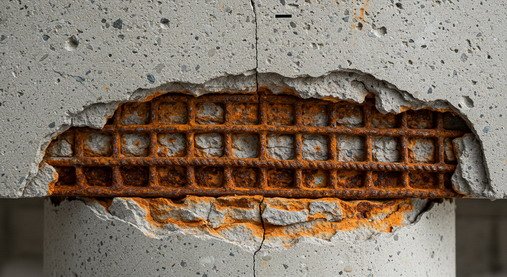What are the Signs of Foundation Heaving?
What are the Signs of Foundation Heaving? You might notice your doors and windows sticking or becoming harder to open and close—this could be one of the first signs of foundation heaving. These warning signs, along with cracks in walls and uneven floors, are your home’s way of telling you something’s seriously wrong underneath. When the soil beneath your home absorbs excessive moisture, it can expand dramatically, causing your foundation to rise unevenly. This upward movement, known as foundation heaving, can create a cascade of structural problems throughout your home if not addressed promptly. What is foundation heaving? You might notice your home acting strangely – doors sticking, floors becoming uneven, or walls cracking. These could be signs of foundation heave, a serious issue where your foundation moves upward due to soil changes beneath your home. Foundation heaving is the upward movement of your home’s foundation, typically caused when the soil around and beneath the foundation absorbs too much water. This often happens with clay soils, which can expand dramatically when wet and shrink when dry. Think of clay soil like a sponge – it soaks up water and grows larger. When this happens under your foundation, the expanding soil creates pressure that pushes the foundation upwards. Bad drainage near the foundation often triggers foundation heave, making your home vulnerable to structural damage. The problem gets worse during extreme weather swings in Fredericton. Your foundation shifts up during rainy seasons and sinks during dry spells, creating a cycle that can seriously harm your home’s structure. Key soil types prone to heaving Clay soils pose the highest risk for foundation heave, expanding up to 15 times their dry volume when exposed to moisture. Sandy or gravelly soils rarely cause foundation issues since water passes through them quickly without significant volume changes. The unique plate-like structure of clay particles traps water molecules between layers, causing soil around your foundation to swell dramatically. Common causes of soil expansion Moisture fluctuations Your soil’s moisture content can change dramatically throughout the year. Heavy rains and melting snow can saturate the ground, while extended dry spells cause soil shrinkage. Poor drainage around your foundation makes things worse, and hidden plumbing leaks can create concentrated areas of moisture that lead to uneven soil expansion. How moisture triggers heaving? Water intrusion is the primary catalyst for foundation heaving, typically occurring through plumbing leaks, improper drainage systems, or sustained rainfall. When water saturates the soil around your foundation, especially clay-rich soil, it causes significant expansion and upward pressure. The seasonal cycle of wet and dry periods creates a continuous pattern of soil expansion and contraction. During wet seasons, soil swells dramatically, while it shrinks and cracks during dry periods, creating an unstable foundation environment. Proper moisture management through well-maintained gutters and correctly graded landscaping is crucial. These systems direct water away from your foundation, helping prevent soil saturation and reducing the risk of foundation heave. External environmental factors Large trees near your home can significantly impact soil moisture levels. Their roots constantly search for water, creating dry pockets in the soil. Additionally, if your yard slopes toward your house instead of away from it, water collects around your foundation. Broken or misaligned downspouts also concentrate water in specific areas. Impact of human activities Your everyday landscaping choices can affect foundation stability. Excessive watering of gardens and lawns near your house’s foundation can oversaturate the soil. Automated irrigation systems, if not properly positioned, might spray water directly against your foundation or create pools of water that seep into the surrounding soil. How to spot foundation heaving early? Indoor warning signs Visible crack patterns Watch for distinctive crack patterns in your home’s interior walls and ceilings. Foundation heave typically causes vertical or diagonal cracks that start from the ground up. These structural cracks often appear wider at the top than the bottom, and you might notice similar patterns in your concrete slab or tile flooring. Door and window complications Your doors and windows can become reliable indicators of foundation issues. You might struggle with doors that won’t latch properly or windows that stick when opening. Pay attention to growing gaps around door frames or windows that previously fit perfectly – these are classic signs of foundation movement. Floor level changes Keep an eye on your floors for signs of foundation problems. Uneven floors might develop noticeable slopes, while tile flooring could become loose or cracked. Watch for growing gaps between your baseboards and floor, as these indicate your foundation is shifting upward. Pro Tip:- Here’s a quick DIY inspection method: place a marble on your floor and watch its movement. If the marble rolls consistently in one direction, you likely have an uneven floor caused by foundation heave. Test multiple areas of your home to identify problem spots requiring professional foundation inspection. Exterior red flags to watch for Foundation wall cracks Inspect your foundation regularly for signs of structural damage. Horizontal cracks in foundation walls are particularly concerning, as they indicate significant pressure from expanding soil. Stair-step cracks appearing in brick or concrete block foundations often signal serious foundation issues that require immediate attention. Structural separation Keep an eye on any gaps developing between your home’s exterior components. When foundation heave occurs, you might notice your chimney starting to separate from the main structure. Similar separations can appear between your porch and house walls, indicating underlying foundation problems. Wall deformation Watch for any changes in your foundation walls’ appearance. Bowed or bulging walls suggest serious structural issues caused by excessive soil pressure. These foundation problems can worsen over time, potentially leading to significant structural damage if not addressed promptly. Soil and water indicators Monitor the soil around your foundation for warning signs. If you notice the ground pulling away from your foundation or persistent standing water after rain, your drainage system might be compromised. These moisture-related issues often contribute to foundation heave and other serious foundation damage. Tips to assess your home’s risk level Conduct soil composition tests to determine










